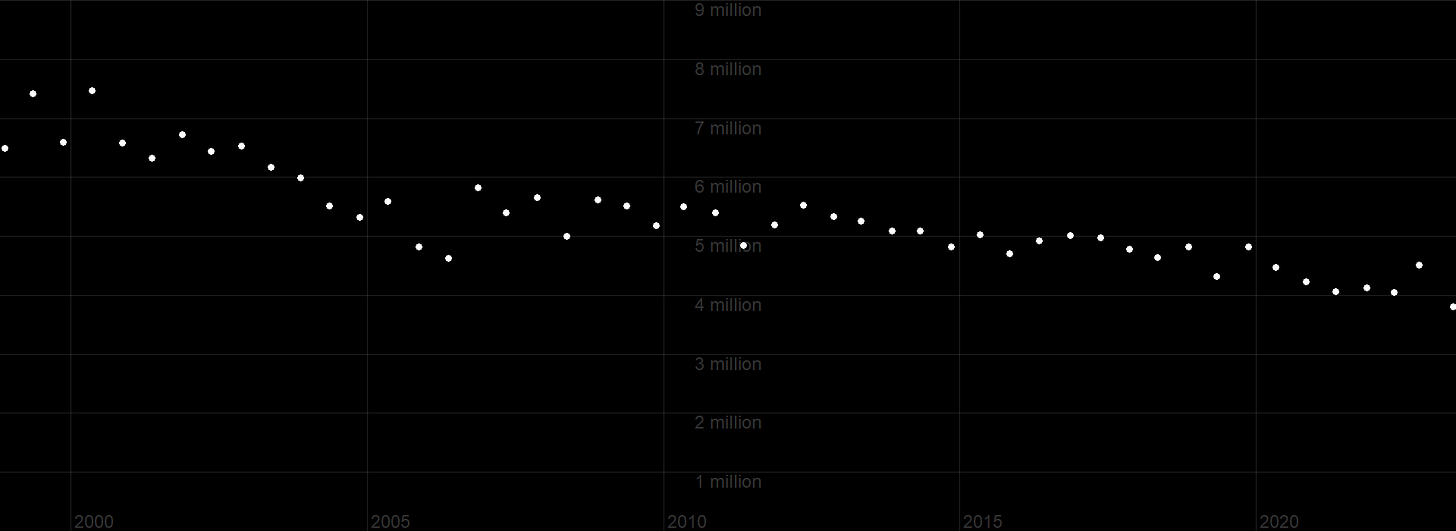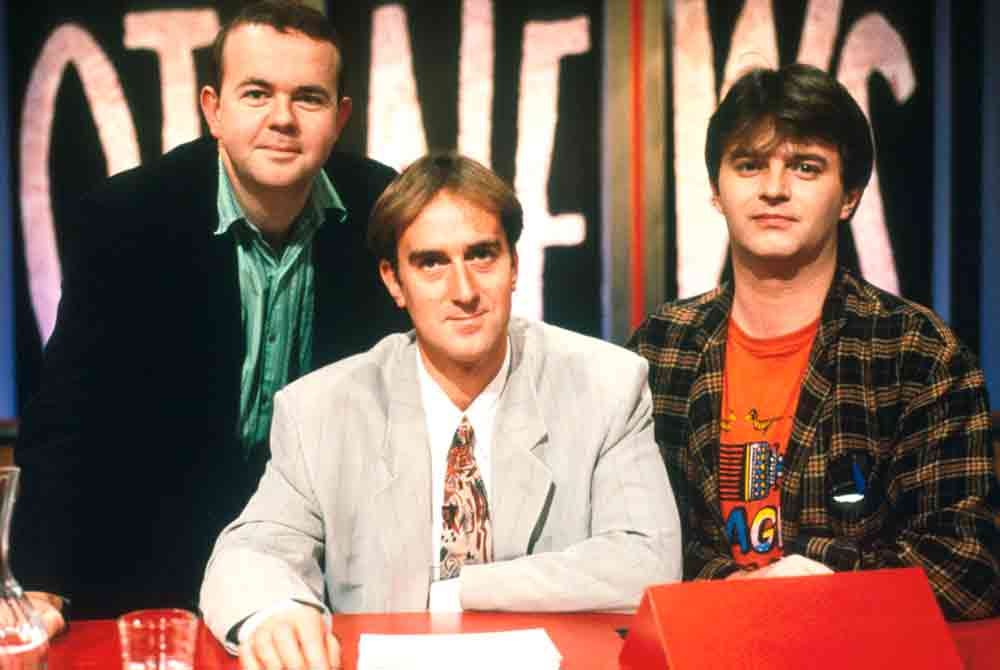(Note: this is the first instalment of a multi-part essay.)
I recently saw some clips from the BBC news quiz show Have I Got News For You (HIGNFY). People abroad will be unaware of the prominence this show used to have in British cultural life.
From when it started in 1990, through the scandal with original host Angus Deayton in 2002, and beyond that to about 2005, HIGNFY was the show for high-brow people to watch. I dare say there were educated and professional people who boasted about not watching any television at all, except for HIGNFY - their weekly dose of elite opinion, their regular firmware update.
But, with the decline of television’s prominence as a medium, HIGNFY has (like all TV shows) become a bit less central than it was, a bit less talked about, a bit less of a “go to” for people to get their fix of current affairs and elite consensus opinion thereon.
The show still regularly tops the schedules, but with smaller viewing numbers as time passes. The overall picture is of TV audiences shrinking (probably due to the rise of social media) but, among them, the proportion watching HIGNFY remaining roughly the same.
Here are the average viewers for each series, from 1998 (the earliest that such data is available) to the present:
Basically, it has gone from about 7 million viewers in 2000 to about 4 million today. The bulk of this decline, from 7 to 5 million, occurred between 2001 and 2005. This confirms my vague memory that the show was hot until “about 2005”, but would seem to refute the idea that its popularity waned as people switched from TV to social media: most of the decline was before then.
Whatever the cause of its early 2000s decline in viewership, for the twenty years since then, HIGNFY has ambled on, due not so much to popularity as to the fact that it is a flagship for the BBC. Rival news quiz show Mock the Week came and went, had its entire existence, within the time that HIGNFY has been living on “prestigial” fumes.
Where did that prestige come from? The sheer talent of the men on screen: host Angus Deayton, contestants Ian Hislop and Paul Merton, and the weekly guest on each side. In addition, it was simply a good format, ideal for giving a wry overview of current events and, thereby, “bigging up” a general worldview; people love being told how to think, and they love being told that how they already think is just terrific. But the main draw was the biting wit on display.
If you wanted to see the famous, the powerful and the corrupt getting skewered, HIGNFY was the show. Hislop and Merton, representing the upper-middle-class and the working-class respectively, would see to it that every crooked or incompetent politician, every vain celebrity, every facile aristocrat and every evil business magnate, got their just deserts. And if they somehow didn’t manage it, Deayton certainly would.
They could do this, and without any whiff of hypocrisy on their own part, because of the time in which HIGNFY came about.
1990 was the end of the Thatcher era. BBC comedy and drama had spent the 1980s undermining that government at every turn. By the time HIGNFY began, it was obvious that this cultural work had paid off: public opinion had turned in favour of Labour. Even while the first series of HIGNFY was airing, there was the on-going public debacle of Margaret Thatcher - the Iron Lady herself - being ousted by her own party. She would leave office just 12 days after the first series ended. (I am not implying any causal connection, just painting the era.)
Every detail above made for the perfect germination moment for HIGNFY. When you look at the “attitude” of the series throughout the 1990s, it makes total sense that the various ingredients above were present at its inception. A “hard right” conservative government, clueless about culture, ruthless about welfare (“there is no such thing as society”), vicious about capitalism, skeptical towards anything high-brow, harking back to an outmoded imperialism, openly homophobic and almost certainly racist, had been successfully undermined by the cultural activity of clever Champagne Socialists, and was now comically attacking itself in a desperate and futile bid to survive. The rats were betraying each other, and not due to bad luck or something mundane like that: it had been brought about by their own wickedness, and by the goodness of Champagne Socialists.
The vindication of the New Left could not be more thorough. And that was the platform upon which HIGNFY surfed the new decade of the 1990s.
Keep reading with a 7-day free trial
Subscribe to Millennial Woes to keep reading this post and get 7 days of free access to the full post archives.







